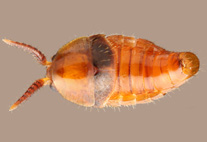Abstract
Serpulids typically build cylindrical calcareous tubes attached to hard substrates. Until now, only three serpulid species inhabiting free-lying polygonal tubes were reported from the deep sea: Spirodiscus grimaldii Fauvel, 1909 with quadrangular spirally coiled tubes, Bathyditrupa hovei Kupriyanova, 1993a with quadrangular tusk-shaped tubes, and Ditrupa groenlandica McIntosh, 1877 with octagonal tusk-shaped tubes. Similar free-lying tubes with tetragonal cross-section, both coiled and tusk-shaped, are described from shallow-water Mesozoic deposits as Nogrobs de Montfort, 1808, Tetraserpula Parsch, 1956, Tetraditrupa Regenhardt, 1961, Glandifera Regenhardt, 1961 and Tubulostium Stoliczka, 1868. We have revised deep-sea serpulids with tetragonal (and secondary octagonal) tubes and compared their tube ultrastructures and mineralogies with those of morphologically similar fossils. Revision of the Recent material has revealed six species in five genera: Spirodiscus grimaldii, S. groenlandicus comb. nov., Bathyditrupa hovei, Bathyvermilia gregrousei sp. nov., Hyalopomatus dieteri sp. nov. and Zibrovermilia zibrowii gen. et sp. nov. Comparisons showed significant ultrastructural and mineralogical differences between Recent and Mesozoic species. Similar tetragonal tube morphology of the Recent forms appears to be a result of convergence due to adaptation to similar soft-sediment habitats of the deep sea. None of Recent genera should be synonymised with any fossil genus, and the genus Spirodiscus Fauvel, 1909, previously synonymised with fossil Nogrobs, should be re-instated. However, a huge stratigraphic gap (66 Myr) between the earliest known fossil tetragonal tubes and their Recent counterparts still allows the possibility that such essentially different structures is a result of ultrastructural evolution, a hypothesis that could be verified by discovery and further study of Caenozoic material.

